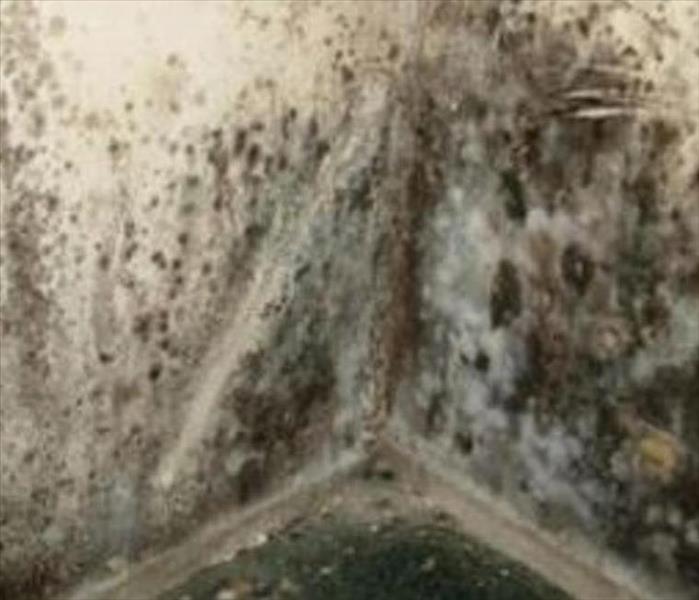Important Facts About Mold
2/7/2019 (Permalink)
 Understanding a few basic facts about mold can help you identify, assess and remedy a mold problem in your own home.
Understanding a few basic facts about mold can help you identify, assess and remedy a mold problem in your own home.
What are molds?
Molds are fungi that can be found both indoors and outdoors. No one knows how many species of fungi exist but estimates range from tens of thousands to perhaps three hundred thousand or more. Molds grow best in warm, damp, and humid conditions, and spread and reproduce by making spores. Mold spores can survive harsh environmental conditions, such as dry conditions, that do not support normal mold growth.
Common indoor molds?
- Cladosporium
- Penicillium
- Alternaria
- Aspergillus
How do molds affect people?
Some people are sensitive to molds. For these people, exposure to molds can lead to symptoms such as stuffy nose, wheezing, and red or itchy eyes, or skin. Some people, such as those with allergies to molds or with asthma, may have more intense reactions. Severe reactions may occur among workers exposed to large amounts of molds in occupational settings, such as farmers working around moldy hay. Severe reactions may include fever and shortness of breath.
People with a weakened immune system, such as people receiving treatment for cancer, people who have had an organ or stem cell transplant, and people taking medicines that suppress the immune system, are more likely to get mold infections.
Exposure to mold or dampness may also lead to development of asthma in some individuals. Interventions that improve housing conditions can reduce morbidity from asthma and respiratory allergies.
Where are molds found?
Molds are found in virtually every environment and can be detected, both indoors and outdoors, year round. Mold growth is encouraged by warm and humid conditions. Outdoors they can be found in shady, damp areas or places where leaves or other vegetation is decomposing. Indoors they can be found where humidity levels are high, such as basements or showers.
How can people decrease mold exposure?
Sensitive individuals should avoid areas that are likely to have mold, such as compost piles, cut grass, and wooded areas. Inside homes, mold growth can be slowed by controlling humidity levels and ventilating showers and cooking areas. If there is mold growth in your home, you should clean up the mold and fix the water problem. Mold growth can be removed from hard surfaces with commercial products, soap and water, or a bleach solution of no more than 1 cup of household laundry bleach in 1 gallon of water. Follow the manufacturers’ instructions for use (see product label).
Other Recommendations include:
- Keep humidity levels as low as you can—no higher than 50%–all day long. An air conditioner or dehumidifier will help you keep the level low. Bear in mind that humidity levels change over the course of a day with changes in the moisture in the air and the air temperature, so you will need to check the humidity levels more than once a day.
- Use an air conditioner or a dehumidifier during humid months.
- Be sure the home has adequate ventilation, including exhaust fans.
- Add mold inhibitors to paints before application.
- Clean bathrooms with mold killing products.
- Do not carpet bathrooms and basements.
- Remove or replace previously soaked carpets and upholstery.
About SERVPRO of The East End
If you do see, smell or detect mold, call SERPVPRO of The East End. We have been in the business of cleaning and restoring residential and commercial properties for over 40 years. Our team of IICRC trained and certified staff knows how to effectively deal with mold infestations and we have been doing that on The East End for over 40 years. We also have the state of the art equipment and techniques to carry out remediation tasks of any size to keep your home safe and clean. We are on call 24/7 365 days a year to be “Faster to any size disaster” making it "Like it never even happened." Give us a call at 631-653-9595 to discuss your cleaning and restoration issues.
*information from https://www.cdc.gov (Center For Disease Control and Prevention)






 24/7 Emergency Service
24/7 Emergency Service